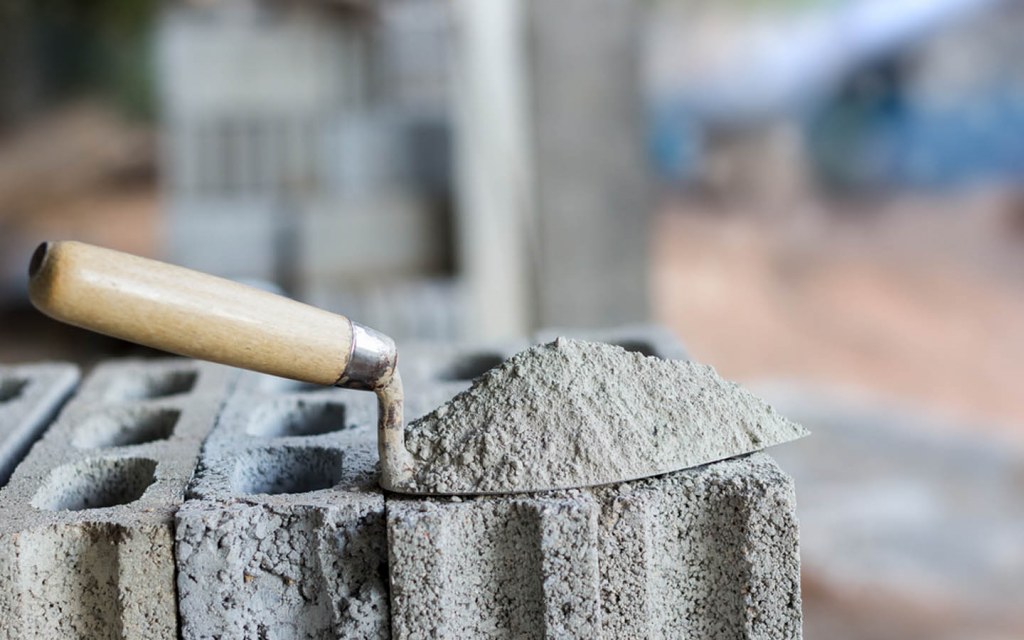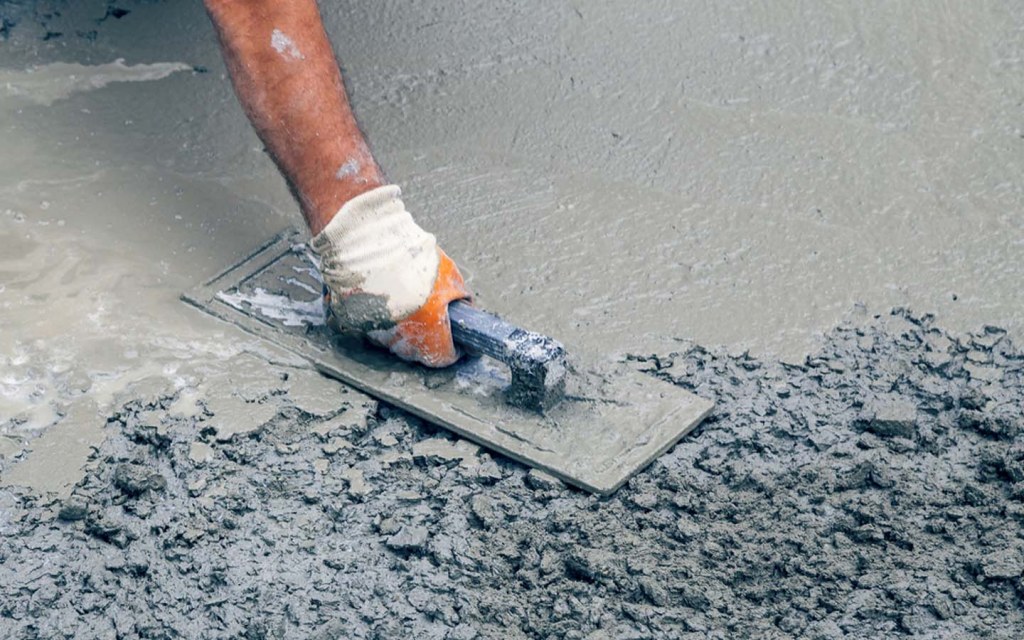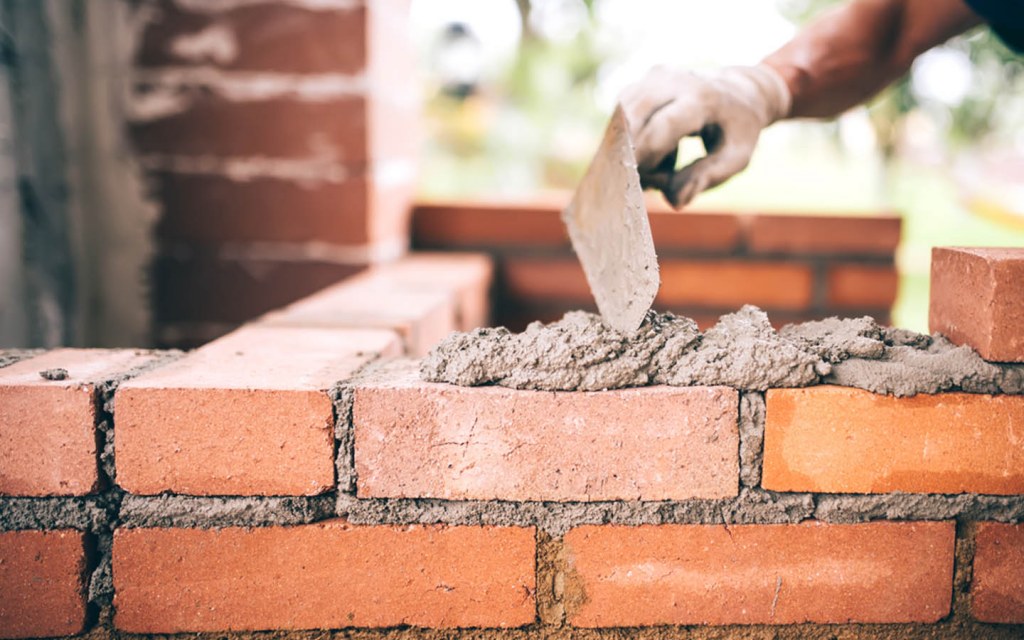Home » Construction » What’s the Difference Between Cement, Concrete and Mortar?
In This Post
– What is Cement?
– What is Concrete?
– What is Mortar?
– Cement vs Concrete vs Mortar
Contractors, builders, architects and other construction professionals are pretty familiar with the difference between cement and concrete along with mortar, but most DIY enthusiasts tend to get confused between these materials. More often than not, they end up saying ‘concrete’ when what they actually meant was ‘mortar’ or vice versa. To construction novices, cement, concrete and mortar may all appear like the greyish building materials in masonry.
However, the thing is that you can’t use these terms interchangeably. If you think cement is the substance that is put between bricks to bind them together or that you use mortar to strengthen the foundation of a building, then you’ve come to the right place.
Let’s take a look at the major differences between cement and concrete as well as the differences between mortar and concrete and learn their usage.
Cement

Cement is one of the most important building materials used across the world and is an essential part of urban infrastructure. It is used as a binding agent for both concrete and mortar.
Available in the form of a very fine powdery substance, the main ingredients of cement include limestone, silicon in the form of sand, iron ore and bauxite. However, the composition of cement varies and may also include chalk, clay, slate and other materials as raw ingredients. Once these substances are mixed together, they are processed and heated at about 1500 degree centigrade in cement manufacturing plants until they turn into a solid material. It is then crushed into a fine powder, deposited in bags, and sold in the market.
At construction sites, cement is mixed with water to form a paste. Owing to the chemical reaction between the two substances, the greyish paste hardens to bind individual building units together. If mixed with water silicates and aluminates, cement turns into a hardened form that is highly water repellent. It is mostly used for water-proofing.
Concrete

The main difference between cement and concrete, another popular building material, is their composition.
Concrete is a composite of about 60 to 80 percent sand and gravel aggregate, 10 to 15 percent cement and a small amount of water, which acts as an activating agent. However, these proportions vary with the type and usage of concrete being made. The amount of sand and gravel in concrete determines its strength, whereas cement serves as a binding element and holds everything together.
Now, contrary to what you might believe, concrete is not used as a binding agent for bricks, stones and other material. Instead, it has the appearance of a semi-liquid material and is used for beams, walls, foundation, slabs and other masonry structures. Moreover, it can be moulded into any shape and dries rather quickly to form a rock-hard substance. Owing to its strength and high workability, concrete is also reinforced with steel rebar and wire mesh for added strength.
Although a lot of builders prefer mixing concrete on-site as per their desired ratio, you can also buy ready-made concrete powder in bags that only require water. For bigger projects, you can buy ready-to-use, pre-mixed, semi-solid concrete mixture directly from the company. This ready-mix concrete is delivered by special trucks made for this purpose.
Mortar

Just like concrete vs cement, the main difference between mortar and concrete is the ingredients they are made of.
The main ingredients of mortar include cement, sand and water. Unlike the low water to cement ratio in concrete, the water to cement ratio in mortar is relatively higher to enhance its bonding capability. Essentially, one of the basic uses of mortar includes adhering different building units and materials together. This includes bricks, concrete blocks and stones. It looks like a thick grey paste and can dry rather quickly.
It is also important to note that mortar is not as strong as concrete, which means it cannot be used as a building material on its own. However, just like concrete, you can either purchase it in a ready-to-mix form or mix it on-site as per your desired ratio. Depending on the proportion of each ingredient, mortar can be differentiated into various forms, such as thinset mortar and grout. Each of these substances has a slightly different formula and usage.
One of the most well-known uses of thinset mortar is that it is used in the installation of floor tiles in the bathroom as well as other parts of a home. It is also used to install tile backsplashes in the kitchen. Grout, on the other hand, has a very low ratio of cement. Thus, it cannot be used as a binding agent but only to fill gaps between marble and ceramic tiles.
Cement vs Concrete vs Mortar
Now that we know the main difference between cement and mortar as well as cement and concrete, and concrete and mortar, let’s compare all of these building materials for further clarification.
| Cement | Concrete | Mortar |
| It is a binding agent | It is a building material | It acts like a glue |
| Cement is made of limestone, sand, iron ore, bauxite and chalk among other materials | Concrete is a compound of sand and gravel aggregate along with cement | Mortar comprises fine sand and cement |
| Solidifies when mixed with water and sets into the shape of the container | Relatively more flexible and can be moulded into different forms before it hardens | It looks like a thick paste that is laid between bricks and stones. It binds the building units together as it hardens |
If you want to learn more about different building materials, stay connected to Zameen Blog – the top construction and real estate blog in Pakistan.
In the meantime, you can take a look at our breakdown of the construction cost of a 1 kanal grey house structure to find out more about the current price trends.
Please feel free to share your thoughts and comments with us on blog@zameen.com. You can also subscribe to our newsletter on the right to receive the latest updates about the developments in the property sector of Pakistan.



